10+ SAMPLE Vendor Partnership Proposal
-
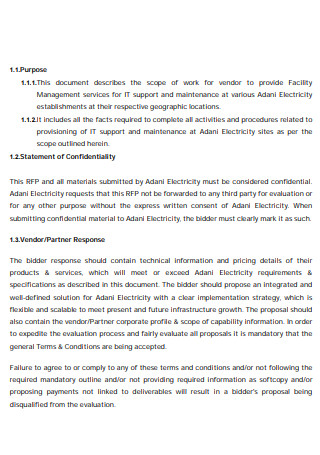
Vendor Partnership Proposal
download now -
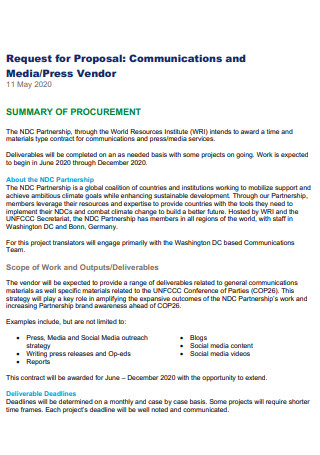
Vendor Communication Partnership Proposal
download now -
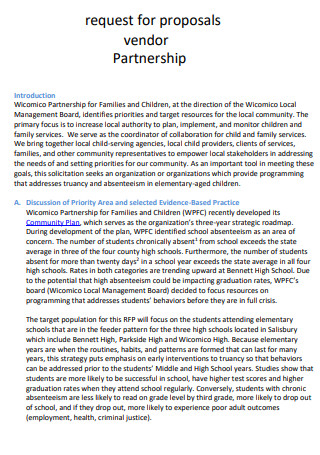
Vendor Partnership Request for Proposal
download now -

Vendor Partnership Proposal Form
download now -
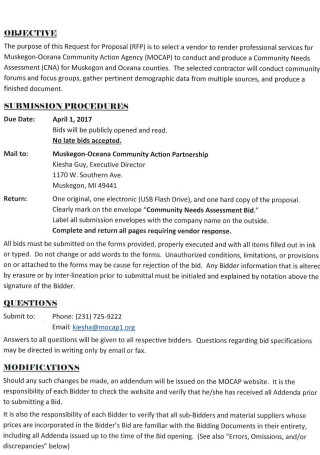
Community Vendor Partnership Proposal
download now -
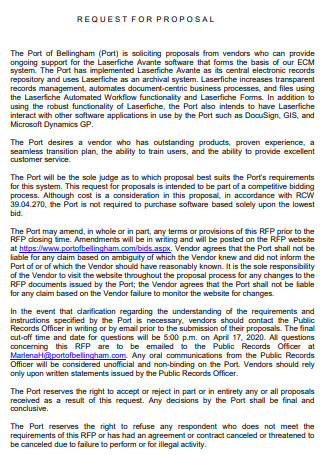
Sample Vendor Partnership Proposal
download now -
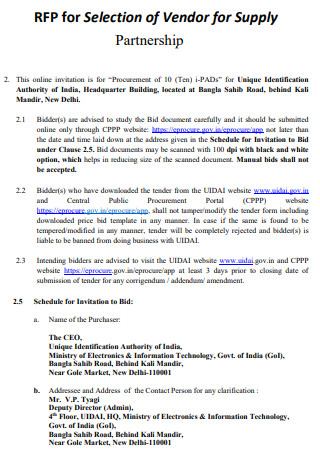
Vendor Supply Partnership Proposal
download now -
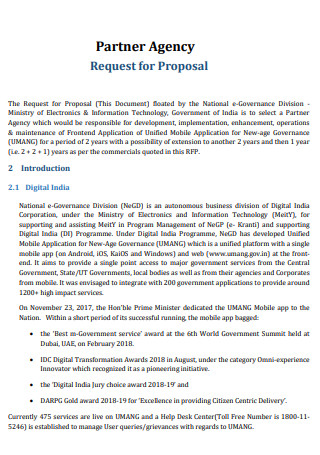
Vendor Agency Partnership Proposal
download now -
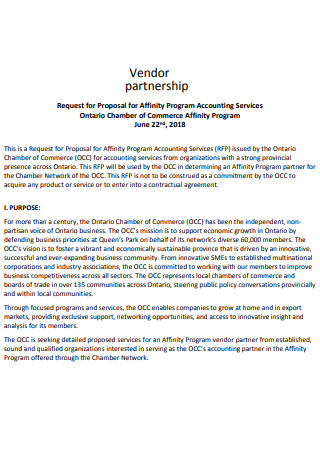
Vendor Partnership Program Proposal
download now -

Vendor Event Partnership Proposal
download now -
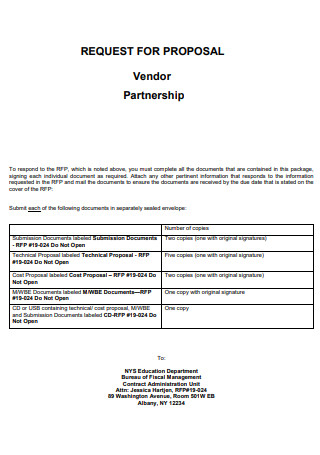
Standard Vendor Partnership Proposal
download now
FREE Vendor Partnership Proposal s to Download
10+ SAMPLE Vendor Partnership Proposal
What Is a Vendor Partnership Proposal?
Tips to Optimize Your Vendor Partnerships
Types of Strategic Partnership
How to Make a Vendor Partnership Proposal
FAQs
How to maximize your chances of success?
How to have an effective partnership proposal?
What makes a good vendor partner?
What Is a Vendor Partnership Proposal?
A vendor Partnership Proposal is a document in which a vendor and a company agree to collaborate. Proposals are yet to be agreed upon but may be exclusive or non-exclusive. Both a vendor contract and a professional partnership proposal detail the organization’s needs, activities, and predicted outcomes, give information on how the partnership will improve sales and staff retention, providing access to key markets while also aligning with corporate goals. This is where a strategic partnership through a business partnership proposal can propel your company forward and open new possibilities. You can then utilize a vendor partnership proposal template available within the article.
Tips to Optimize Your Vendor Partnerships
If one of the most crucial reasons for your company’s success is because of its vendors. If you don’t, you might be missing out on a great opportunity to unlock previously untapped powers. The suggestions within this article will help you distinguish your company in the eyes of your vendors, causing them to pay more attention to your issues and assist you in achieving better outcomes. Keep these points in mind so that you can better draft the Proposal.
Types of Strategic Partnership
Before approaching another company about forming an alliance or beginning to create a strategic vendor partnership proposal, you should consider your choices. A strategic partnership can take many different forms. It might be difficult to know where to begin when it comes to forming a Strategic Business. Every brand is unique, and there is no such thing as something that can fit into all of the solutions. That’s fantastic in some ways. It implies that there are few restrictions and that you have ample opportunity to establish a unique partnership that benefits both you and your partner vendor.
How to Make a Vendor Partnership Proposal
A vendor partnership proposal form is used to bring up and establish the aims, objectives, terms, and conditions of a vendor partnership proposal. A standard proposal not only adds professionalism to the partnership but also makes it less susceptible to legal interpretation. A formal proposal, for example, is often written in clear, succinct legal language. Points are divided into primary divisions and subsections using articles, numerals, and letters. You can look into the available business proposal template as an additional reference. Otherwise, you can view the proposal letter sample so you can have a basis for when you make one.
-
1. Cover or Title Page
The first-ever page that the readers and potential vendor partners will spectate is the cover or title page. This page is meant to present the over-arching title with regards to the partnership. A solid title page distinguishes your proposal while also emphasizing your attention to detail and communication skills. You cannot simply skip over this page and immediately jump right into the next sections. One thing to note is that a cover page usually includes names included in the partnership as well as the official logos used.
-
2. Company Overview and Contact Information
This section will indicate the background information regarding your company. Since you are approaching the vendor, regardless if you had a prior meeting and thorough discussion with them, you will need to indicate the relevant details about your company that can serve as an introduction to other readers not directly involved with the vendor company. You should also be providing your official contact information such as the professional number, email address, as well as the official address your company is located at. Make sure that the information you have added here has been proofread and free of any typographical errors.
-
3. Executive Summary
The proposal’s main elements should be summarized in an Executive Summary. It should restate the proposal’s aim, highlight the proposal’s important points, and provide any proposal results, conclusions, or suggestions. Since an executive summary is only a small element of a bigger vendor partnership proposal document, be direct in your wording and explain the investment proposal or project proposal right away. It’s primarily used to provide investors and stakeholders with a rapid overview of key information in a partnership proposal, such as the company description, market analysis, and financial data.
-
4. Project Overview
You can’t just expect to approach a potential vendor without any purpose behind it, if you do, the chances of you gaining a partnership will decrease. This section is where you state the project details and thoroughly explain where the vendor will come into place. Make sure to describe the project’s goals and objectives in a detailed statement, as well as the activities that will be taken to achieve them and the expected consequences. A project overview also allows you to summarize the Project’s Schedule, budget, required resources, and status. This will help vendors to be aware of the inclusion of the partnership.
-
5. Terms and Conditions
Before the final draft of the proposal, there was brainstorming and a series of talks. While profit is often the overriding goal, each business has its own set of objectives. By acknowledging both shared and individual aims, a well-written proposal creates a mutually advantageous environment. Payment Terms, sales targets, and conditions, such as whether your organization is the sole distributor and whether the vendor will partially fund or take on promotional efforts or events, are also included. Also included are agreed-upon ways for making collaborative decisions, resolving any conflicts, and measuring the condition of the vendor partnership using benchmark indicators.
FAQs
How to maximize your chances of success?
Highlight your company’s accomplishments and personality, but don’t go overboard with the promotion. Keep in mind that you are attempting to establish a mutually beneficial partnership. To stress your main arguments, use acceptable repetition. Only include facts and information that are relevant to the company with which you want to collaborate. If you are contacting numerous companies, personalize your proposal for each one and make sure it corresponds with their vision and objectives. Superlatives and words or phrases with a negative connotation should be avoided. After submitting your proposal, follow up with an email or phone call a few days later.
How to have an effective partnership proposal?
You should show a deep interest in the company with whom you want to partner. Reading their website, checking social media, or reading any published case studies will assist you back up your remarks with accurate data. Demonstrate that you are aware of the issues, the need to address them, and your desire to find a long-term solution. Structure your sentences such that they clearly explain what people want and need to know. Make your letter specific to the organization and ensure that it supports its mission and vision.
What makes a good vendor partner?
Partners work together to solve problems. Both parties go above and beyond to ensure the success of the other. All of these factors contribute to the development of trust, authenticity, and credibility. Sometimes trust begins with a little gesture and grows from there. When something goes wrong, a good vendor would contact you soon away and provide you with frequent updates throughout the fulfillment process. Vendors who over-promise or don’t appreciate it when you ask questions should be avoided. You want someone who is absolutely open about their abilities and limitations.
When companies form joint ventures with other companies, they can sometimes get greater results. Partnerships in business must be mutually beneficial. One should begin by describing their business and how they create money in such a letter. Also, describe how the relationship will help your partner’s company, as well as the short- and long-term goals, future ideas, and data. If the partner specifies a format, follow it. It is important that you have gone through the curated lists found within this article to know how to take advantage of the available resources that your partnered vendors provide. With that being said, prepare a vendor partnership proposal letter now!
